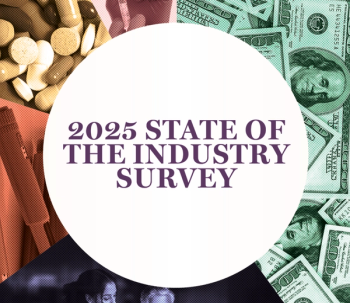
We Need a Data-driven Approach to Vaccine Distribution
The complexity of the phased approach to COVID-19 vaccination will require strategic use of data and communication.
We are looking at a steep uphill battle when it comes to getting Americans vaccinated against the coronavirus. Estimates identify the sweet spot to achieve “herd immunity” is
Beyond the sheer scale of getting that many people vaccinated, we have the added complexity of a multiple-phase distribution timeline, with different groups “in line” to receive the vaccine before others.
The good news is that we are dealing with a pandemic that pretty much every American
knows about and wants to eradicate, so we have broad public awareness on our side. From there, it gets complicated.
The bad, or at least challenging news, is that there are nearly 200 million people we need to get vaccinated in a relatively short period of time. A distribution strategy must include the ability to classify and segment people so we can identify those who should receive the vaccine at each phase.
The critical role of data in a distribution strategy
For health systems –
Without a robust data set and system to interpret the data, any efforts to organize a patient community is nearly impossible.
States and systems around the country are gearing up for the first phase of the vaccine rollout:
Step One: Classify patient populations
In order to execute a strategy that is built around different groups of people receiving different kinds of information at different times, it’s critical to have the ability to classify a system’s patient data. For example, every person who falls within the priority groups – health care providers and staff of long-term care facilities –
This goes beyond clinical data; it needs to include psychographic and demographic data in order to predict and prioritize outreach to the patient community. For example, a first responder or frontline health care worker will be first up to receive the vaccine, but their professional information which dictates their place “in line” won’t be available in a person’s clinical file, highlighting just how important a comprehensive, clinical + psychographic + demographic strategy is.
Recipients not only need to know they are first in line to receive the vaccine, but also where they can go to get it, information about safety and side effects and how/when to get the second dose — and why doing so is critical to the vaccine’s effectiveness.
Step Two: Develop and conduct strategic outreach
Once patients are classified, the important work begins: The outreach. Unfortunately, we are not going to get all of those 196 million Americans vaccinated by sending a text message and telling them to go out and get the vaccine. With experts
We must begin educating people now. There is so much misinformation out there causing confusion, distrust and anxiety; people need leadership and trusted experts to make sense of it all. The opportunity, then, is ripe for health care organizations to take the lead as a trusted authority and source of information for their communities.
A sample outreach plan might look like the following:
First communication. General information to all patients about vaccine approval, estimated dates for different tiers to get vaccinated, who is in each group and where to go for more information.
Second communication. Targeted information to first group of recipients with key information – where and when they can get the vaccine (including a link to schedule, if relevant), a link to information about side effects and science behind the vaccine(s) available, and a reminder that it will be administered in two doses.
Third communication. Reminder for appointment, with links to reschedule, information about side effects and to schedule second dose
Fourth communication. Reminder for second-dose appointment with a links to reschedule and connect with health care provider to discuss any troubling side effects
Patients are hungry for information about their health — especially right now — so it’s critical to strike the right balance between using the data available to deliver customized and personalized information while not overwhelming people so they stop reading the material they’re receiving.
Step Three: Measure effectiveness and revise/repeat
Effective patient communication is like a very precise recipe: Too much or little of something, and the quality declines. As we seek to execute such a huge public health campaign, it’s not just the patient data that will drive success, but rather, data along the campaign’s continuum. For each group, the messages that resonate and get them to take action — i.e. get the vaccine — will be different. Those messages will change for groups in different regions of the country, where community priorities vary. Therefore, it will be critical to measure the effectiveness of the messages delivered in real time so that health care organizations can quickly revise their outreach efforts based on those findings (or repeat if they were effective).
Effective data strategies drive real results
CDC Director Robert Redfield said
SMS/text messaging is the most effective channel for conversions (i.e. getting people to take action), but should be used in conjunction with email to ensure the message is seen. There was a 25 percent uplift in flu vaccinations for patients that received flu shot appointment outreach either in form of email or SMS.
Communications that include educational information, e.g., FAQs, safety/efficacy, COVID-19 precautions - have high engagement, and should play a key role in any communication schedule/plan health care organizations roll out.
The magic window to get a person to take action is three days; it’s important to reach out more than once.
Any communication - whether it’s a phone call, email or text - should include an opportunity to book an appointment seamlessly. Our data show those clinics that called, texted or emailed patients to schedule a flu vaccine appointment had a dramatic uptick in conversion than those that simply waited for patients to call them.
We are facing what health care professionals call the “
While swinging a bat blindfolded can be fun at a birthday party, it will have devastating effects for the country’s healthcare.
Joe Schmid is the chief technology officer of SymphonyRM, a healthcare software company in Palo Alto, California.
Newsletter
Get the latest industry news, event updates, and more from Managed healthcare Executive.





















































